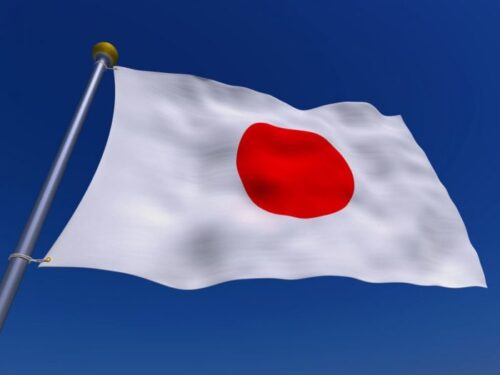Everyone knows the simple design of the Japanese national flag, with its white background and large red dot. It is one of the most important symbols of the nation of Japan. What does the flag’s design mean? And what is its history?

Story of the National Flag of Japan
The national flag of Japan is officially called ‘Nisshoki’, which means ‘Flag of the Sun symbol’. Although colloquially it is known as ‘Hinomaru’ which means ‘Circle of the Sun’. It is the most important symbol of Japan. The exact origins of the Nisshoki are unknown. But there are historical data from the year 607 where the Emperor of China communicated with Japan calling it ‘The country of the Rising Sun’.
Later, during the attempted invasion of Mongolia in Japan in the 13th century, a Buddhist monk named Nichiren gave the shogun a flag to carry in battle and it was very similar to the Nisshoki. Subsequently, at the beginning of the Edo period, the red circle representative of the current flag was used in fan designs and different paintings. In 1854 the shogun ordered all merchant ships in Japan to use the Nisshoki flag to differentiate Japanese ships from foreigners.
Meiji Era
At the beginning of the Meiji period, the country was forced to design state symbols for the first time, such as the national flag, the national anthem, and the imperial emblem. Therefore, after going through an extensive review, the Nisshoki became the de facto national flag in Japan. During the Meiji period until the end of the Showa era (1864-1945), the Nisshoki was widely used for multiple purposes, but mainly to unify Japan and represent the honor and joy of being Japanese.
In those days it was very common that families raised the flag during festivities or important events. The Nisshoki is used as moral support in the ‘Hachimaki’, a bandana that is tied on the forehead, and that generally contains written messages such as ‘Safe Victory’, ‘Japan’, ‘Number 1’, and other motivational phrases.
World War 2
In 1945, after the surrender of Japan, the Allied forces occupied the country until 1952. During this period the use of the flag of Japan in any of its forms was highly restricted. It was subsequently allowed to be used in buildings related to the national government. During the period of occupation, US forces began a campaign to change the flag’s image of the Japanese towards a negative image.
Finally, in 1949, all restrictions were removed and anyone anywhere can raise the flag of Japan. After the war in Japan, the use of the flag was considerably reduced. But still, most schools raise the Nisshoki every morning. Also, the flag was the symbol of the Olympics held in Japan in 1964. After many years, since its de facto adoption, in 1999 the first official law was passed that states that the flag of Japan is the Nisshoki. That was also the time that the national anthem officially became ‘Kimi ga yo’.
Color and Background
The white background color symbolizes the purity, honesty, and integrity of the people of Japan. The red color is said to represent the main goddess of Japanese mythology, the sun goddess Amaterasu. It is said that the Emperor of Japan is a direct descendant of the sun goddess. Today the Nisshoki is recognized worldwide as the official flag of Japan.
Your Japan Tour
As seasoned Japan experts, we create perfect Japan package tours including guides who can tell you all about Japanese culture. Check out our group tours and private tours, or contact us to start planning your unforgettable holiday to this fascinating country. Japan is full of once-in-a-lifetime experiences, culture, history, nature, and delicious food!
